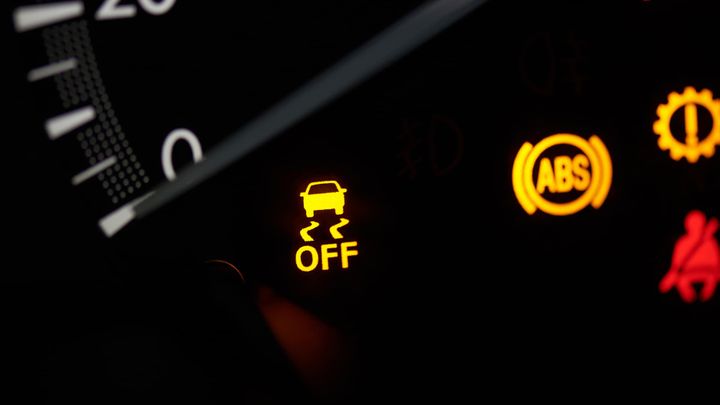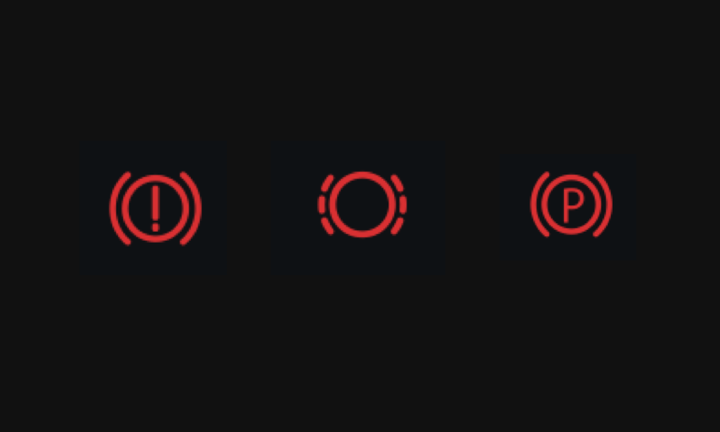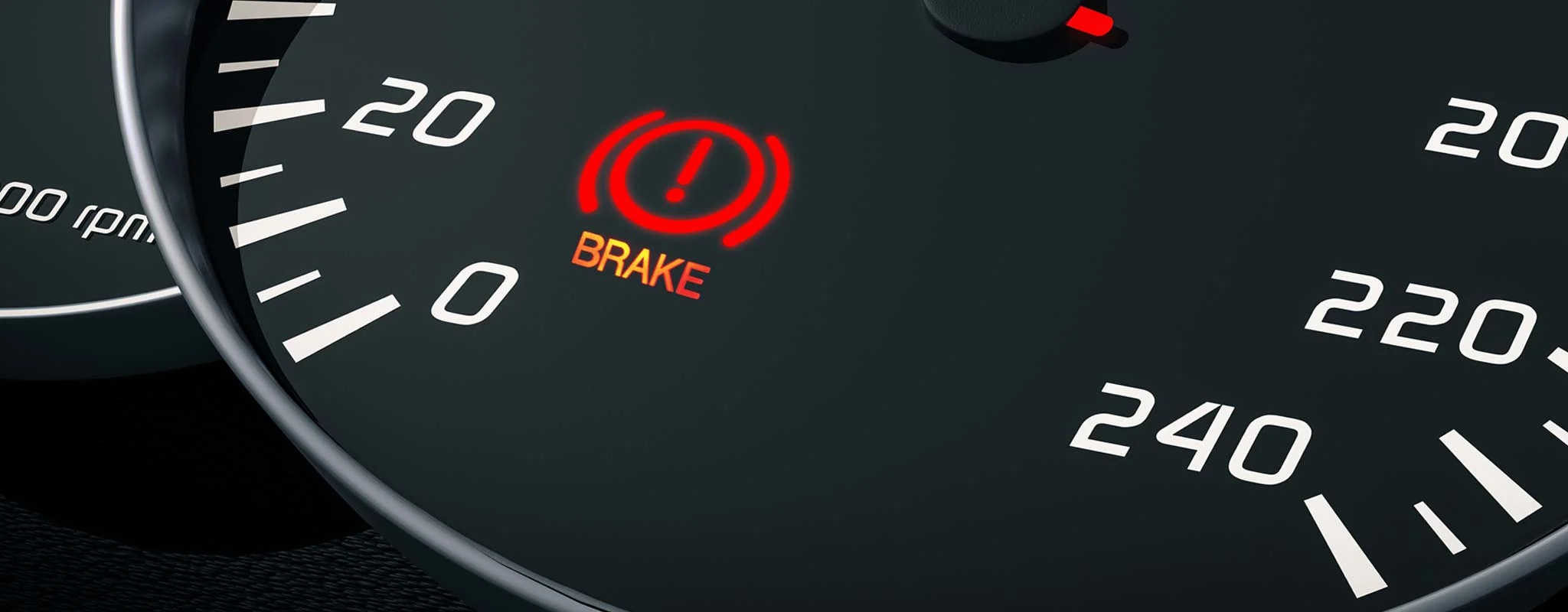


As a driver, it's essential to pay attention to your vehicle's warning lights, especially when it comes to the brake system. If you've noticed that your brake light is staying on, even when the parking brake is released, it's crucial to investigate the cause promptly. A persistent brake light can indicate several issues, ranging from minor to severe, and it's important to address them to ensure your safety on the road.
In this article, we'll explore the most common reasons behind a brake light that won't turn off on your dashboard. We'll delve into the role of brake fluid, brake pads, and other critical components in triggering this warning. Additionally, we'll discuss the steps you should take when faced with a persistent brake light and the importance of regular brake system maintenance. By the end of this article, you'll have a better understanding of what causes this issue and how to handle it effectively.

The most common reason for a brake light that stays on is simply forgetting to fully release the parking brake, also known as the emergency or hand brake. When the parking brake is engaged, it activates a sensor that triggers the brake warning light on your dashboard. This serves as a reminder to release the brake before driving, as leaving it engaged can cause unnecessary wear on your brake system and potentially lead to reduced braking performance.
To resolve this issue, ensure that you fully release the parking brake before setting off. If the brake light persists even after releasing the parking brake, there may be a problem with the sensor or the parking brake mechanism itself. In such cases, it's best to have your vehicle inspected by a qualified mechanic to diagnose and fix the issue.

Another common cause of a persistent brake light is low brake fluid levels. Brake fluid plays a crucial role in your vehicle's braking system, transmitting the force applied to the brake pedal to the brake calipers or wheel cylinders. When the brake fluid level drops below a certain threshold, it can trigger the brake warning light on your dashboard.
Low brake fluid can be caused by various factors, such as:
Leaks in the brake lines or components
Worn brake pads that have exposed the wear indicators
Normal wear and tear of the brake system over time
If you suspect that low brake fluid is causing your brake light to stay on, it's essential to address the issue promptly. First, check the brake fluid reservoir and top it off if necessary, using the appropriate type of brake fluid for your vehicle. However, if you notice a significant drop in fluid levels or find yourself frequently topping off the reservoir, it's crucial to have your brake system inspected for leaks or other issues.
| Cause of Low Brake Fluid | Description |
|---|---|
| Leaks in brake lines or components | Brake fluid can leak from various parts of the system, such as hoses, calipers, or the master cylinder, leading to low fluid levels. |
| Worn brake pads | As brake pads wear down, the caliper pistons must extend further to compensate, which can cause the fluid level in the reservoir to drop. |
| Normal wear and tear | Over time, brake fluid can absorb moisture and degrade, leading to a decrease in fluid levels and potential damage to brake components. |
Brake pads are a key component of your vehicle's braking system, providing the friction necessary to slow down and stop your car when you press the brake pedal. As brake pads wear down over time, they become thinner and less effective at generating the required friction. To alert drivers of worn brake pads, many modern vehicles are equipped with brake pad wear sensors that trigger the brake warning light when the pads reach a certain level of wear.
If your brake light is staying on due to worn brake pads, it's crucial to replace them as soon as possible. Continuing to drive with excessively worn brake pads can lead to reduced braking performance, increased stopping distances, and potential damage to other brake system components, such as the rotors or calipers.
To determine if worn brake pads are the culprit behind your persistent brake light, have your vehicle inspected by a qualified mechanic. They can measure the thickness of your brake pads and recommend replacement if necessary. As a general rule, brake pads should be replaced when they reach a thickness of 3-4 millimeters or as specified by your vehicle's manufacturer.
The brake light switch is a small but important component located near the brake pedal. Its primary function is to activate the brake lights when you press the brake pedal, alerting drivers behind you that you're slowing down or stopping. However, a faulty brake light switch can also cause the brake warning light to stay on, even when the parking brake is released and the brake fluid levels are normal.
Symptoms of a faulty brake light switch may include:
Brake lights that stay on constantly or don't illuminate at all when the brake pedal is pressed
Cruise control that doesn't engage or disengages unexpectedly
Shifting issues in vehicles with an automatic transmission
If you suspect that a faulty brake light switch is causing your brake warning light to stay on, it's best to have your vehicle inspected by a qualified mechanic. They can diagnose the issue and replace the brake light switch if necessary.
The anti-lock braking system (ABS) is a safety feature designed to help you maintain steering control during emergency braking situations. It works by rapidly pumping the brakes, preventing the wheels from locking up and allowing you to steer around obstacles. However, a malfunction in the ABS can cause the brake warning light to illuminate, often accompanied by the ABS light.
Common issues that can trigger an ABS malfunction include:
Faulty wheel speed sensors
Damaged or corroded ABS wiring
Malfunctioning ABS control module
If you notice both the brake warning light and the ABS light on your dashboard, it's essential to have your vehicle inspected by a qualified mechanic as soon as possible. Driving with a malfunctioning ABS can compromise your ability to control the vehicle during emergency braking situations, increasing the risk of accidents.
In some cases, a persistent brake warning light can indicate a more serious issue within your vehicle's braking system. Various components, such as brake sensors, control units, and hydraulic valves, can malfunction and trigger the brake light. Additionally, electrical issues, such as a short in the brake light wiring, can cause the light to stay on continuously.
Symptoms of a brake system malfunction may include:
Spongy or soft brake pedal feel
Reduced braking performance
Unusual noises when braking, such as squealing, grinding, or clicking
Pulling to one side when braking
Vibrations or pulsations in the brake pedal
If you experience any of these symptoms alongside a persistent brake warning light, it's crucial to have your vehicle inspected by a qualified mechanic immediately. Driving with a malfunctioning brake system can be extremely dangerous, as it can lead to increased stopping distances, reduced control, and potentially cause accidents.
| Symptom | Possible Cause |
|---|---|
| Brake light stays on after releasing parking brake | Faulty parking brake sensor |
| Brake light comes on with low brake fluid | Leak in brake lines or components |
| Brake light illuminates with worn brake pads | Brake pad wear sensors triggered |
| Brake light stays on with spongy brake pedal | Air in the brake lines |
| Brake light and ABS light on simultaneously | Malfunctioning ABS components |
If you find yourself dealing with a persistent brake warning light, there are several steps you can take to address the issue:
Check the parking brake: Ensure that the parking brake is fully released and not engaged, as this is the most common cause of a brake light that stays on.
Check the brake fluid level: Locate the brake fluid reservoir under the hood and check the fluid level. If it's low, top it off with the appropriate type of brake fluid for your vehicle. If you notice a significant drop in fluid levels or find yourself frequently topping off the reservoir, have your brake system inspected for leaks.
Schedule an inspection with a qualified mechanic: If the brake light persists after checking the parking brake and brake fluid levels, or if you notice any unusual symptoms, such as a spongy brake pedal or reduced braking performance, it's essential to have your vehicle inspected by a qualified mechanic as soon as possible. They can diagnose the issue and recommend the necessary repairs.
Avoid driving with a malfunctioning brake system: If you suspect that your brake system is not functioning properly, it's crucial to avoid driving your vehicle until the issue is resolved. Driving with malfunctioning brakes can be extremely dangerous, as it can compromise your ability to stop or control the vehicle, increasing the risk of accidents.
| Step | Action |
|---|---|
| 1 | Check that the parking brake is fully released |
| 2 | Check the brake fluid level and top off if needed |
| 3 | Have the vehicle inspected by a qualified mechanic |
| 4 | Avoid driving if the brake system is malfunctioning |
Regular brake system maintenance is essential for preventing issues that can trigger the brake warning light and ensuring optimal braking performance. By staying proactive about your vehicle's brake health, you can catch potential problems early, avoid costly repairs, and maintain a safe driving experience.
Some key aspects of regular brake system maintenance include:
Checking brake fluid levels and condition: Regularly inspect your brake fluid reservoir and top off the fluid if necessary. Also, pay attention to the condition of the fluid; if it appears dark or contaminated, it may be time for a brake fluid flush.
Monitoring brake pad wear: Keep an eye on your brake pad thickness and replace them when they reach the manufacturer's recommended minimum thickness, typically around 3-4 millimeters. Many vehicles have built-in wear indicators that produce a squealing noise when the pads are nearing the end of their life.
Inspecting brake lines and components: Periodically check your brake lines, hoses, and components for signs of wear, damage, or leaks. Address any issues promptly to prevent more serious problems from developing.
Following the manufacturer's recommended maintenance schedule: Stick to your vehicle's recommended maintenance schedule, which typically includes regular brake system inspections and services. This helps ensure that your brakes are in optimal condition and can help prevent unexpected failures.
By prioritizing regular brake system maintenance, you can:
Extend the life of your brake components
Reduce the risk of brake system malfunctions
Maintain optimal braking performance
Enhance your overall safety on the road
Save money on costly repairs in the long run
A persistent brake warning light can be a cause for concern, but by understanding the common causes and taking appropriate action, you can address the issue and maintain a safe driving experience. From an engaged parking brake to low brake fluid levels and worn brake pads, various factors can trigger this warning light. If you're unsure of the cause or notice any unusual symptoms, it's essential to have your vehicle inspected by a qualified mechanic promptly. Regular brake system maintenance, including checking fluid levels, monitoring brake pad wear, and following the manufacturer's recommended service schedule, can help prevent issues and ensure optimal braking performance. By staying informed and proactive about your vehicle's brake health, you can confidently navigate the road ahead.
If your brake warning light illuminates while driving, safely pull over as soon as possible and call for a tow to a trusted mechanic. Continuing to drive with a potential brake issue can be extremely dangerous.
It's wise to have your brakes checked during every tire rotation, which is typically every 6 months or 6,000-8,000 miles. Regular brake inspections help catch wear and tear early before more serious problems develop.
Yes, a low brake fluid level can trigger the brake warning light on your dashboard. Check your brake fluid reservoir and top it off to the "full" line using the proper DOT brake fluid for your vehicle.
A malfunctioning brake light switch can cause the brake warning light to stay on, even if your brake fluid is topped off. Have the switch tested and replaced if needed to resolve the issue.
While you can technically still drive with the ABS light on, it's not recommended as the anti-lock braking system helps you maintain control during emergency stops. Have the ABS system diagnosed and repaired promptly.
A flashing brake warning light typically indicates a more severe issue that requires immediate attention. It could signify a critical fault in the brake system or a dangerously low brake fluid level.
Some vehicles are equipped with brake pad wear sensors that can trigger the brake warning light when the pads are nearing the end of their service life. Replace worn brake pads promptly to restore proper braking performance.
In addition to the brake warning light, signs of brake trouble include a soft or spongy brake pedal, grinding or squealing noises when braking, pulling to one side during braking, or a burning smell after repeated hard stops.
If your parking brake is stuck or not fully releasing, causing the brake warning light to remain illuminated, have it inspected and serviced by a qualified mechanic. Driving with the parking brake engaged can cause excessive wear and damage.
Yes, issues with the ABS control module, such as internal faults or poor connections, can trigger the brake warning light in addition to the ABS light. Proper diagnosis with a scan tool can help pinpoint the specific problem.

Miguel started tinkering with car radios as a teenager, fascinated by the intricate dance of wires and circuits. This passion led him to pursue a career as an automotive electrician. For the past 10 years, Miguel has tackled everything from flickering headlights to mysterious electrical gremlins. He thrives on troubleshooting electrical problems and enjoys sharing his knowledge to empower car owners to understand their vehicles better.








